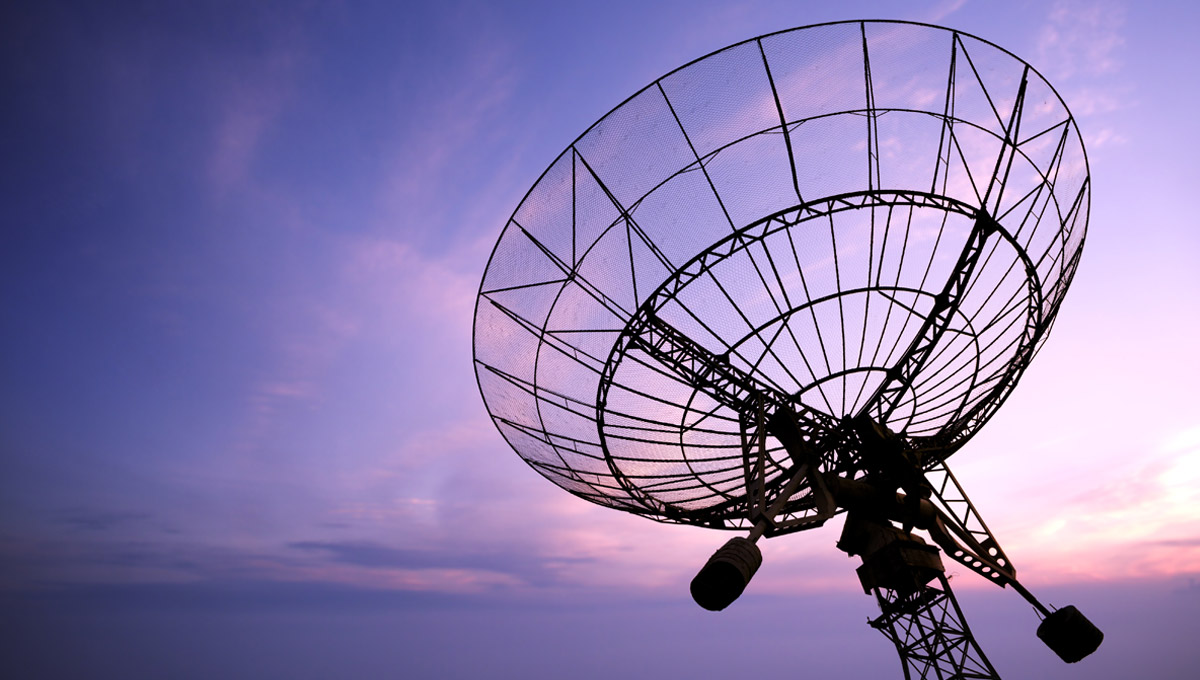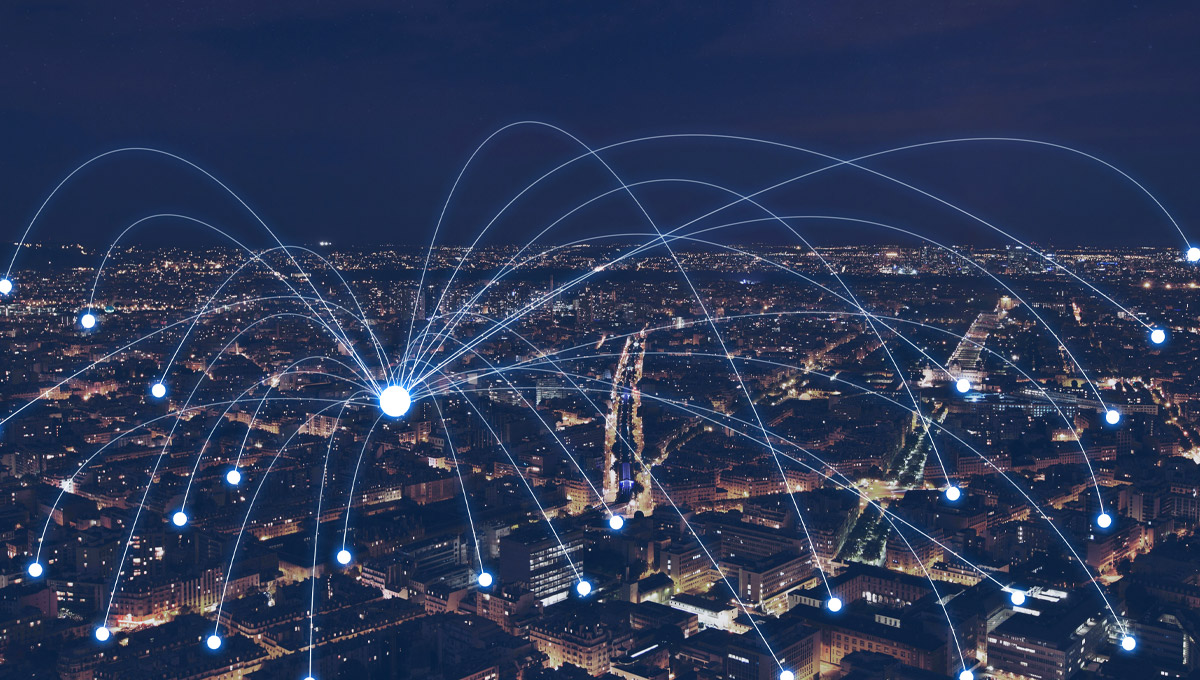Please click here to download the Newsletter as PDF.
On February 01, 2024, the Government of India (“GoI”) introduced the Interim Budget (“Budget”) for the financial year 2024-2025. The Budget envisages an allocation of INR 1,11,876.67 crores[1] (Indian Rupees one lakh eleven thousand eight hundred seventy-six crore sixty-seven lakh) (approximately USD 13,500 million (United States Dollar thirteen thousand five hundred million)) for expenditure. In comparison with the previous financial year’s budget of INR 98,359.41 crores (Indian Rupees ninety-eight thousand three hundred and fifty-nine crore forty-one Lakh) (approximately USD 11,850 million (United States Dollar eleven thousand eight hundred fifty million)), there is an increase of more than INR 13,000 crores (Indian Rupees thirteen thousand crore) (approximately USD 1,567 million (United States Dollar one thousand five hundred sixty seven million)) in the current allocation.
The total net allocation for the Department of Telecommunication (“DoT”) includes an additional provision of INR 17,000 crores (Indian Rupees seventeen thousand crore) (approximately USD 2,050 million (United States Dollar two thousand fifty million)) amounting to INR 1,28,876.67 crore (Indian Rupees one lakh twenty-eight thousand eight hundred seventy-six crore sixty-seven lakh) (approximately USD 15,530 million (United States Dollar fifteen thousand five hundred thirty million)) in total. This additional provision has been made from the balances available under the Universal Service Obligation Fund (“USOF”) and will be utilized for various schemes under the USOF, such as compensation to telecom service providers and Bharatnet.
Connectivity to access service Virtual Network Operators (“VNOs”) From more than one Network Service Operators (“NSO”)
The Telecom Regulatory Authority of India (“TRAI”) through its notification dated February 23, 2024, released the Consultation Paper on “Connectivity to Access Service VNOs From More Than one NSO” (“Consultation Paper on Connectivity from Multiple NSOs”). The DoT sought the recommendations of TRAI to allow Unified License VNOs(“UL (VNO)”) licensees holding Access Service (“AS”) authorisation to enter into agreements with multiple NSOs to obtain connectivity and provide different services within a single LSA.
Up until 2013, the GoI granted only standalone licenses to various Telecommunication Service Providers (“TSPs”) – such as AS, internet services and national and international long-distance services. Then the Unified License (“UL”) regime was introduced which assisted TSPs to provide a range of services under the UL umbrella. Later in 2016, Virtual Network Operators (“VNO”) was introduced under the UL which allowed TSPs to provide services without owning its networks and by utilising its parent NSO.
Currently, UL (VNO) only allows for the holders to take AS authorisation and connectivity from one NSO in a specific License Service Area (“LSA”). In such a situation, if a UL (VNO) licensee obtains wireline AS connectivity from one NSO in an LSA and intends to obtain wireless AS connectivity from another NSO in the same LSA, they are not permitted to do so.
The Consultation Paper on Connectivity from Multiple NSOs sought the views of the stakeholders broadly on the following:
- The maximum number of NSOs from whom a UL (VNO) licensee holding AS authorization can be permitted to obtain connectivity in an LSA for providing wireline AS;
- The terms and conditions for permitting multiple connectivity if more than one NSOs is allowed to provide wireline access;
- Whether a UL (VNO) licensee holding AS authorization in an LSA should be allowed to take wireless AS from one NSO and wireline AS from another NSO in the same LSA;
- The terms and conditions for permitting to obtain such wireless AS and wireline AS connectivity from multiple NSOs in the same LSA; and
- Any other relevant issues or suggestions related to the parenting of licensees holding AS authorization under UL (VNO).
The stakeholders were required to provide their comments by March 22, 2024, and counter comments by April 5, 2024.
Introduction of Calling Name Presentation (“CNAP”) service in Indian Telecommunication Network
TRAI through its notification dated February 23, 2024, released the Recommendations on “Introduction of CNAP Service in Indian Telecommunication Network” (“CNAP Recommendations”).
In India, Access Services Providers (“ASPs”) provide calling line identification presentation supplementary services, which ensures that all receivers of calls are able to view the number from which they receive incoming calls. However, this has proven ineffective in its primary objective of identification of callers and the concerns surrounding unsolicited commercial communication from unregistered telemarketers, IT enabled system calls or robocalls, and fraudulent communication loom over the telephone consumers, especially as many of these bypasses the do-not-disturb feature. Even though there are third party applications that provide name identification services, the details for the caller names are crowdsourced and hence not accurate.
In 2022, the DoT requested TRAI to provide its recommendations on the feasibility of Calling Name Presentation (“CNAP”) in Indian telecommunication network. CNAP supplementary services would allow the subscribers to identify the calls received by name which are sourced from the customer application forms.
Subsequently, TRAI published a paper calling for recommendations from the stakeholders on the matter. The issues for consultation raised by TRAI were broadly along the lines of the need for CNAP supplementary services, whether they are to be mandatory and the need to acquire consent of telephone customers for activation of these services. These CNAP Recommendations have been released pursuant to the inputs received from stakeholders on a consultation paper that was issued in this regard.
The CNAP Recommendations broadly cover the following:
- The need to introduce CNAP supplementary services to the Indian telecommunication network and the need for all ASPs to provide these services to their telephone subscribers upon request;
- The calling name of each telephone subscriber is required to be provided by the originating ASPs;
- The name identity information provided by telephone subscribers in the customer application form is to be used for the purpose of CNAP. In case the legal name of the telephone subscriber has changed, a suitable mechanism is recommended to be implemented by ASPs to amend such information;
- Considering that the Indian telecommunication network is still based on circuit switched core, the CNAP supplementary services are required to be implemented as per the technical model instructed by TRAI;
- In case of subscriber entities holding bulk connections and business connections, a facility to present their ‘preferred name’ in place of the name appearing in the customer application form is suggested;
- Prior to the implementation of CNAP supplementary services on a pan India basis, a trial and assessment of the implementation is required to be conducted in a selected LSA with the subscriber bases of all telecom service providers in that LSA.
- Post acceptance of these CNAP Recommendations, the GoI is required to issue a cut off date for making CNAP features available in all devices sold in India; and
- The relevant provisions for enabling CNAP features are required to be added to the respective telecom service licenses.
Guidelines to establish and operate ‘Spectrum Regulatory Sandbox/ Wireless Test Zones (“WiTe Zones”)’
The DoT issued Guidelines to establish and operate ‘Spectrum Regulatory Sandbox/ WiTe Zones’ on March 11, 2024 (“Guidelines“), to establish and operate ‘Spectrum Regulatory Sandbox/ WiTe Zones.
The Guidelines have been issued to promote emerging radiocommunications technologies, research and development, and experimenting in the field of wireless radiocommunications. As per the Guidelines, national academic or research institutions, technology parks, TSPs, incubators, industry partners, original equipment manufacturers are eligible for establishment of WiTE Zones.
Licenses for establishment of WiTE Zones are granted to applicants by the DoT/ Wireless Planning and Coordination Wing, for a period of 10 (ten) years, following which the license is renewable in multiples of 5 (five) years. There is no establishment fee to be paid for WiTe Zones. A payment of INR 1000 (Indian Rupees One Thousand) is required to be made per spectrum band by the users of the WiTe Zone to the GoI on the Saral Sanchar portal.
WiTe Zones are of 2 (two) kinds, namely Category I and Category II. Category I WiTe Zones utilise spectrum bands that are not assigned to any users in an area for testing and experimentation and will continue to be used till they are assigned to other users. The testing stands terminated if the spectrum band is assigned to another user, but a reasonable time period may be granted as an exception for ongoing testing, if the testing can be done without hampering the assigned use of the spectrum to the licensees.
Category II WiTe Zones are in interior/ uninhabited areas where they are assigned specific spectrum bands including satellite and broadcasting bands. These zones are subject to additional conditions laid down in the guidelines relating to mandating testing zone sizes required for specific band types tested, mitigation of interference for existing licensed users aiming to expand their networks, and protection of operations of the WiTe Zone in case of new spectrum assignments in the vicinity.
The Guidelines also lay down the general conditions governing the users of WiTe Zones and the establishment and operations of WiTe Zones. Presently, the users of WiTe Zones are required to be Indian nationals or Indian entities.
Removal of requirement to obtain Wireless Operating License (“WOL”)
The DoT Access Service division issued notification on March 11, 2024 (“WOL Notification”), regarding the removal of requirement to obtain WOL.
Previously, by way of the license amendment of 2016, the requirement to obtain WOL for Access Service authorization in Cellular Mobile Telephone Service /Unified Access Service / Unified License was removed.
In continuation, it has been decided to remove the requirement of obtaining WOL for captive very small aperture terminal closed user group and captive mobile radio trunking services licenses, unified license, and unified license (virtual network operator) with authorisations from national long distance, international long distance, public mobile radio trunking service, global mobile personal communication by satellite, internet service and Machine-to-Machine (“M2M”) service with immediate effect.
This removal of requirement of WOL is not applicable to entities intending to establish or operate transmitting stations and have been granted a license under Section 4 of the Indian Telegraph Act, 1885 and require frequency assignment from the Wireless Planning and Coordination Wing of the DoT, permitting the use of appropriate frequencies and parameters for the establishment, maintenance, or operation of transmitting stations.
Demonstration of Lawful Interception System and Lawful Interception Monitoring (“LIS/ LIM”) facilities for all types of services
The DoT issued a notification regarding the demonstration of LIS/ LIM facilities before the Lawful Enforcement Authorities (“LEAs”) on March 12, 2024 (“LIM Notification”).
Presently, as per license agreements, any services permitted under the scope of the agreement commences by the licensee after giving an intimation to the licensor/ DoT, following which the licensee demonstrates to the DoT their services’ compliance with the scope of services under the agreement and mandated monitoring facilities, within 90 (ninety) days of such intimation. This testing of LIS/ LIM facilities is done through the respective divisions of licensing of the DoT.
As per the LIM Notification, all types of licensees are required to offer the LIS/ LIM facilities for testing through the Security (Policy, Planning and Intelligence) Division instead of their respective licensing divisions so as to streamline the process and to ensure ease of doing business.
Recommendations on Usage of Embedded SIM for M2M Communications
TRAI through its notification dated March 21, 2024, released the Recommendations on “Usage of Embedded SIM for M2M Communications” (“Recommendations on e-SIMs for M2M”).
The DoT and TRAI have previously published several recommendations and instructions with regard to the development of M2M communication-based technology in India. On September 5, 2017, TRAI notified recommendations on ‘Spectrum, Roaming and QoS related requirements in M2M Communications’ (“Recommendations of 2017”). These may be considered as the predecessor of the current Recommendations which focus on the use of e-SIMs.
These Recommendations on e-SIMs for M2M broadly cover the following:
- All communication profiles on any M2M e-SIM fitted in an imported device on international roaming in India is required to be mandatorily converted / reconfigured into communication profiles of Indian TSPs a period of 6 (six) months from the date of activation of international roaming in India on the M2M e-SIM or change of ownership of device, whichever is earlier. As per the Recommendations of 2017, a period of 3 (three) years was given to devices fitted with e-SIMs on permanent international roaming to be reconfigured to an Indian TSP.
- TRAI recommends that the switch-over of the communication profile on M2M e-SIMs from one licensed TSP to another TSP should be driven by the concerned OEM of the devices containing M2M e-SIMs.
- TRAI recommends that Unified Access Service License holders, Unified License (Access Service Authorisation) holders, Unified License (M2M Authorisation) holder, Unified License for Virtual Network Operators (M2M Authorisation) holder and companies holding M2M Service Providers Registration with specific permission to own and manage Subscription Manager Secure Routing (“SM-SR”), should be permitted to own and manage SM-SR in India. Furthermore, it is recommended that the additional terms and conditions to be imposed on registrants of M2M Service Providers for granting permission to own and manage SM-SR are to be included in the ‘Guidelines for Registration process of M2M Service Providers (M2MSP) and WPAN/ WLAN Connectivity Providers for M2M Services’ notified by DoT on February 8, 2022.
- For installation of profiles of Indian TSPs on M2M e-SIMs fitted in the devices imported in India, the concerned OEM and M2M Service Providers should be given the flexibility to choose between: (i) profile download from the Subscription Manager-Data Preparation (“SM-DP”) of the Indian TSP to the M2M e-SIMs through the existing (foreign) SM-SR, or (ii) profile download from the SM-DP of the Indian TSP to the M2M e-SIMs through the new (Indian) SM-SR, after SM-SR switch from foreign to Indian.
- TRAI recommends that the M2M e-SIMs with global International Mobile Subscriber Identities (“IMSIs”) assigned to foreign entities should be treated like foreign M2M e-SIMs working in international roaming in India, and all restrictions imposed on foreign M2M e-SIMs working in international roaming in India should also be applied on the M2M e-SIMs fitted with global IMSIs assigned to foreign entities.
- The need to ensure that 901.XX IMSI series allocated by International Telecommunication Union to Indian entities are not utilised for providing M2M services in India, keeping in mind the challenges to its implementation.
- The need to ensure that Telecom Engineering Centre examines the possibility of devising a standard process for device-to-device transfer of profiles on consumer e-SIMs.
Amendment to the existing KYC instructions for the M2M connections
On March 21, 2024, the DoT released an amendment to the existing know your customer (“KYC”) instructions for M2M connections (“M2M KYC Amendment”) addressed to licensed TSPs, relaxing the restrictive features for M2M connections. Through the M2M KYC Amendment, the DoT has relaxed the erstwhile instructions of May 16, 2018, and May 30, 2019 (“Erstwhile Instructions”) in relation to the restrictive features for the Subscriber Identity Module (“SIM”) cards used only for M2M communication services.
The M2M KYC Amendment has amended the Erstwhile Instructions to allow the use of SIM cards for M2M communications services in the following manner:
- Outgoing/ incoming calls will be allowed to/from predefined set of maximum 4 (four) numbers only.
- Likewise outgoing/ incoming SMSs will be allowed to/from predefined set of maximum 4 (four) numbers only.
- Data communications will be allowed on a maximum of 100 (one hundred) predefined public Internet Protocol (“IP”) addresses/ uniform resource locator with fixed access point name (“APNs”) or equivalent technology options by the TSPs.
- These restrictions are not applicable to calls made to emergency numbers like police, fire, ambulance, etc.
A list of such numbers/ IP addresses is to be provided to the TSPs while obtaining M2M SIM cards. At a later stage, if the need arises, the TSPs can be requested to change/reconfigure these numbers and will not apply to data communication on private networks/VPNs.
Extension of registration period of unregistered entities providing M2M Services and/ or WPAN / WLAN Connectivity for M2M Services
On March 27, 2024, the DoT issued a notification extending the timeline for registration of unregistered entities providing M2M Services and/ or WPAN/ WLAN connectivity for M2M Services from March 31, 2024, to June 30, 2024. This extension was granted in view of the requests received by the DoT from different industry associations.
Furthermore, authorised telecom licensees are requested to inform the unregistered entities utilising their telecommunication resources for providing M2M connectivity/ services, about the mandatory registration with the DoT through the Saral Sanchar portal. Failure to comply with the extended timeline for registration can result in the disconnection and withdrawal of the telecommunication resources allocated to the unregistered entity by the authorised telecom licensee.
It has been reiterated that authorised telecom licensees are prohibited from providing new telecom resources to unregistered entities providing M2M services/ connectivity. Verification and recording of DoT registration number is mandatory for access to telecom resources for M2M services/ connectivity.
Plintron India Private Limited v. Bharat Sanchar Nigam Limited and Ors.
The Telecom Disputes Settlement and Appellate Tribunal (“TDSAT”) passed an order on March 1, 2024 in the case of Plintron India Private Limited v. Bharat Sanchar Nigam Limited and Ors., directing the Chairman and Managing Director of Bharat Sanchar Nigam Limited (“BSNL”), the Secretary of the DoT, and the Chairperson of TRAI to hold a joint meeting either by themselves or by their representatives, to discuss the media for utilization of spare capacity of infrastructure of BSNL by Mobile Virtual Network Operator Licensees.
Plintron India Private Limited (the “Petitioner”) had obtained a Mobile Virtual Network Operator (“MVNO”) license in 2017 to provide services in the service areas of Tamil Nadu and Andhra Pradesh. Subsequently, the Petitioner entered into an empanelment agreement with the Respondent, BSNL, and a commercial agreement (based on the empanelment agreement) to act as an agent of BSNL and bring in additional customers for BSNL for a share of the revenue. The empanelment agreement expired by the efflux of time and even though the commercial agreement had not completed its tenure, it could not stand alone as it was based on the empanelment agreement, thereby disallowing the Petitioner to continue the business.
The dispute arose as the Petitioner contended that BSNL has unused/ spare capacity which will go into waste, if an MVNO licensee, such as the Petitioner, is not allowed to use the spare or surplus capacity and infrastructure of BSNL while BSNL contended that the Petitioner is an inefficient MVNO.
Upon hearing the matter, TDSAT directed that the Chairman and Managing Director of BSNL, the Secretary of the DoT, and the Chairperson of TRAI, to hold a joint meeting with the aim to find a solution about the continuity of the agreements so that spare capacity of BSNL can be used by MVNO licensee and revenue can be generated from the unutilized infrastructure of the BSNL. The Meeting was conducted on March 27, 2024. The outcome of the meeting is yet to be disclosed.
Central Bureau of Investigation v. A. Raja and Ors.
On March 22, 2024, the High Court of Delhi admitted the Central Bureau of Investigation’s (“CBI”) leave to appeal challenging the acquittal of A. Raja, former telecom minister, and others in the 2G spectrum allocation case. The case was earlier adjudicated upon by a special CBI Court and in December 2017, the special CBI Court had acquitted the former minister and the others involved, of all charges in the 2G spectrum allocation case. The CBI moved the High Court challenging the acquittal order in 2018.
The High Court observed that typically, when a verdict is reached by a court of law, the matter is set to rest and there is only limited right of appeal, so as to prevent arbitrary action. Considering the peculiar nature of this case, where the criminal proceedings were initiated on the directions of the Apex Court and that the investigation was monitored by the Apex Court itself, it is unlike any ordinary criminal offence.
The High Court laid down that this case is pertaining to economic offence and it constitutes a separate class of offences which require to be handled with a different approach. It was further held that, the loss from the offence is ultimately borne by the common man and in case there has been an un-merited acquittal, the scrutiny by the appellate court is the only available method to bring in correction wherever required, and that appellate scrutiny cannot begin without the threshold of leave being granted.
The High Court further observed some contradictions in the judgment of the CBI Court which require deeper examination. It noted that in this peculiar situation, the evidence requires to be weighed differently, for instance, oral evidence should not be outrightly discarded merely because there is no corroborating documentary evidence. The improper review of certain evidence by the special CBI Court also laid ground for the reasoning of the High Court.
Considering all these factors, the leave to appeal was granted by the High Court challenging the acquittal by the special CBI court.
This Newsletter has been prepared by:

Tony Verghese |

Radhika Gupta |

Shruthi Shekar |
Neethika Manoj |
For more details, please contact [email protected]
[1] Ref: Grand Total of the Budget (indiabudget.gov.in)












